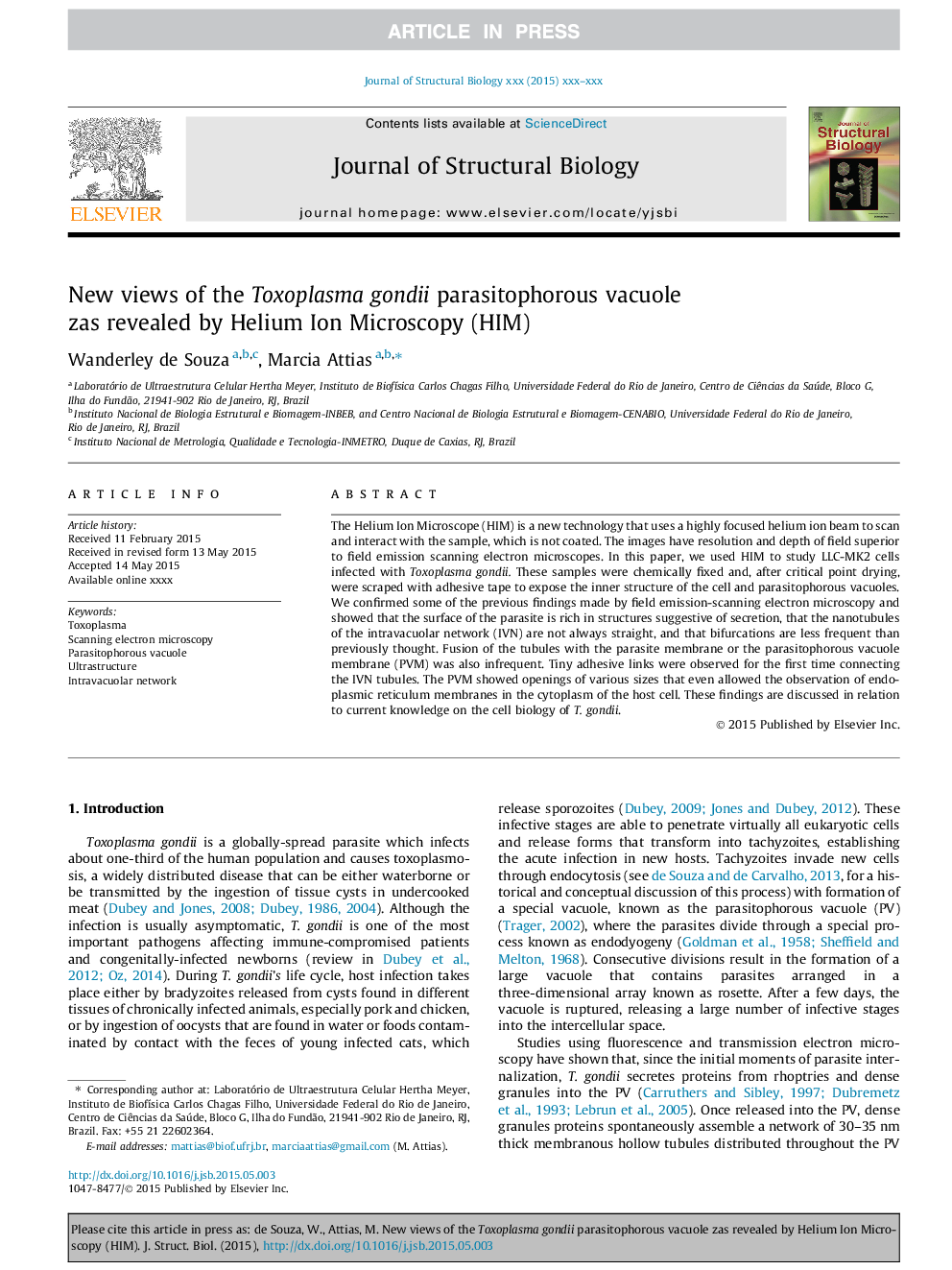| Article ID | Journal | Published Year | Pages | File Type |
|---|---|---|---|---|
| 5913874 | Journal of Structural Biology | 2015 | 10 Pages |
Abstract
The Helium Ion Microscope (HIM) is a new technology that uses a highly focused helium ion beam to scan and interact with the sample, which is not coated. The images have resolution and depth of field superior to field emission scanning electron microscopes. In this paper, we used HIM to study LLC-MK2 cells infected with Toxoplasma gondii. These samples were chemically fixed and, after critical point drying, were scraped with adhesive tape to expose the inner structure of the cell and parasitophorous vacuoles. We confirmed some of the previous findings made by field emission-scanning electron microscopy and showed that the surface of the parasite is rich in structures suggestive of secretion, that the nanotubules of the intravacuolar network (IVN) are not always straight, and that bifurcations are less frequent than previously thought. Fusion of the tubules with the parasite membrane or the parasitophorous vacuole membrane (PVM) was also infrequent. Tiny adhesive links were observed for the first time connecting the IVN tubules. The PVM showed openings of various sizes that even allowed the observation of endoplasmic reticulum membranes in the cytoplasm of the host cell. These findings are discussed in relation to current knowledge on the cell biology of T. gondii.
Related Topics
Life Sciences
Biochemistry, Genetics and Molecular Biology
Molecular Biology
Authors
Wanderley de Souza, Marcia Attias,
